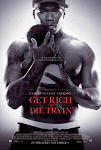Strinati, Dominic (2000) : An introduction to studying Popular culture. London: Routledge
that the gangster film is mainly associated with American gangsters.
- was first laid out during the 30's.
- the first gangster movies made are Little Caesar(1930), Public Enemy(1931) and Scarface(1932), still used as common examples of the Gangster Genre,and also seen as the classical movies of this particular genre.
- The gangster film itself has subgenres and many features to be explored, such as the production of the movie, relation to hollywood and the studio system,the narrative and the ideology of the movie and how it is related to the "American Dream".
- Gangster films are about Law, order and crime which are also features of the other genres such as crime or police genres, but this particular genre focuses on gangsters and their stories. (how and why they got into crimes, success as Gangsters, their lives, the power they had, etc...
- Gangsters movies are usually aimed at a wider audience and a society in order to warn them from the crimes that are happening, throughout the character of the gangster.
The gangster film and the Hollywood system:
- the Gangster film is the product of the growth of the Hollywood studio system.
- "the ways in which the studios were organised to produce films can be seen as determining factors on the final pattern or form of the individual film" Ryall (1979:28), the Hollywood system has limits on the films being produced, however the gangster film has been shaped as the product of the Hollywood system.
- according to Hollywood, the gangster film could combine realism and popular culture because it has been very popular throughout the years and more films have been made following this type of genre.
Ideology and the Gangster film:
- Warshow (1964:84): the gangster is a product of the city and the gangster film is a the product of the imaginary city created by cinema "the real city produces only criminals but the imaginary city produces gangsters" which means that the gangster speaks out for the American people and rejects the qualities and the demand of modern life.
- "the gangster is what we want to be and what we are afraid we may become." and this is expressed through the character of the gangster.
